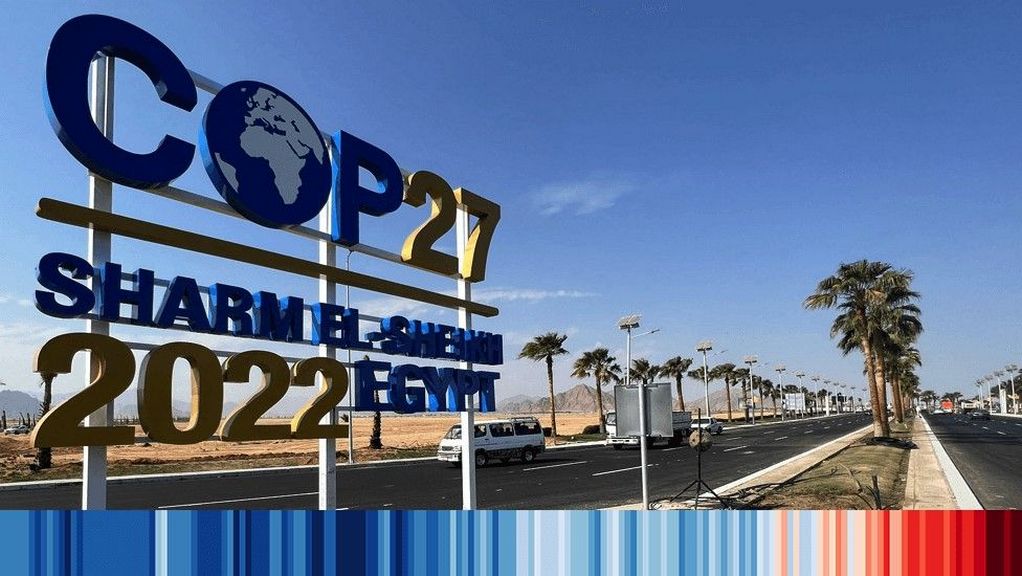As COP27 gets underway in Egypt shipping knows it needs to work together to decarbonise, and wants to act. What the industry needs now is a clear pathway to walk the talk of collaboration – and that pathway is inherently digital, argues Mikko Kuosa, CEO of NAPA.
As COP27 opens in Egypt, collaboration will once again be on everyone’s lips as the need of the hour to bring shipping to net zero. Rightfully so – we need to work together to turbocharge innovation on fuels, designs and technologies. Without partnerships, we can’t reform misaligned incentives and find the right business models for this new era.
Our industry already knows this, and the willingness to act is reflected in the remarkable number of calls and pledges for collaboration, which have accelerated in the past year. However, translating these good intentions into practice has often been the tricky part. For some, the barrier is ‘not knowing where or how to start’, while others may be hesitant to share information and resources, for fear of putting their own organizational goals at risk.
Fundamentally, what the industry needs is a clear way forward – a framework that strengthens trust, transparency, and sets out a fair playing field in ways that can work in practice for all partners. The latest generation of digital tools are making such frameworks a reality – and they are already supporting partnerships that drive decarbonisation across our sector.
A salient example of collaboration in action is the Blue Visby solution, a multilateral platform where companies agree on a common framework to end the practice of “rush to wait” and reduce their greenhouse gas emissions by an average of 15%.
In essence, the framework provides a dynamic “queuing system” for groups of vessels travelling to the same port. This enables ships to slow down, cut their emissions, and arrive one after the other without losing out in the process, as their order of arrival is maintained as if they had sailed independently.
It goes without saying that the key to Blue Visby’s success is the partners’ willingness to adopt a new contractual framework where charterers, ship owners and cargo owners share the risks and rewards of using the solution. But what brings them together in an effective partnership is digital technology. Powered by NAPA software, the algorithm assigns a target arrival time for each vessel in a way that is fair, transparent, and trusted by all participating companies. It also addresses concerns about the sharing of sensitive information, as it only requires AIS data that is already publicly available.
Operational efficiency is far from the only challenge where greater collaboration can address the challenges of the green transition. Take shipyards, who are being asked to innovate at an unprecedented speed to create the next generation of greener vessels, integrating new fuels and technologies.
Any design involves multiple stakeholders, including naval engineers, owners, sub-contractors, and classification societies. To innovate on such a scale, they need the right tools to collaborate and communicate efficiently.
The backbone of this will be intelligent 3D models and web-based information-sharing platforms, which provide a common software base to share data and feedback – while also ensuring that the intellectual property rights of each party are protected. This creates a win-win situation that helps teams test new approaches and innovate together, enabling them to make the most of time and resources to deliver the best possible designs.
The race to net-zero also requires heightened collaboration on a vital aspect: safety. New fuels and technologies, such as wind propulsion, batteries and carbon capture, all impact a ship’s stability profile. Careful planning is required ahead of their deployment, and constant decision-making is needed once they are installed on board.
This calls for enhanced partnerships between seafarers on board and fleet operations centres on shore – and once again digital platforms make this a reality.
Using 3D models together with real-time data delivered through the cloud, shoreside teams can now monitor several variables simultaneously and better support seafarers on board with stability calculations and decisions. This enables them to flag potential risks before they ever become a problem, making safety a shared responsibility. Given the speed and breadth of the technology transition, this more proactive and collaborative approach is essential to maintain the trust of a key partner: seafarers.
The climate emergency calls for enhanced collaboration on several fronts – reinforcing existing partnerships and even bringing former competitors together. We have the tools we need to translate words into action, and create partnerships that will benefit our own companies, the industry, and the planet.
Tags: COP27, Digital, NAPA, Netzeo, Shipping



Recent Posts
DNV Grants Approval in Principle for New Ammonia Bunkering Vessel Design
Proteus Launches Modular Hydrogen Fuel Cell System for Maritime Sector
Van Oord Unveils Boreas, World’s Largest and Most Sustainable Offshore Wind Installation Vessel
New methanol-fuelled vessel ‘Berlin Maersk’ to enter service
NMPA wins greentech global environment award
CMA CGM in negotiations with Indian shipyards for LNG-powered shipbuilding
L&T to Develop Green Hydrogen and Ammonia Projects in Kandla
Pan Ocean Orders Two Eco-Ready VLCCs from HD Hyundai Heavy Industries